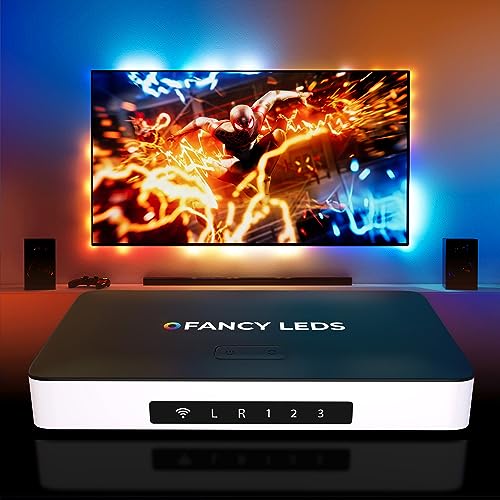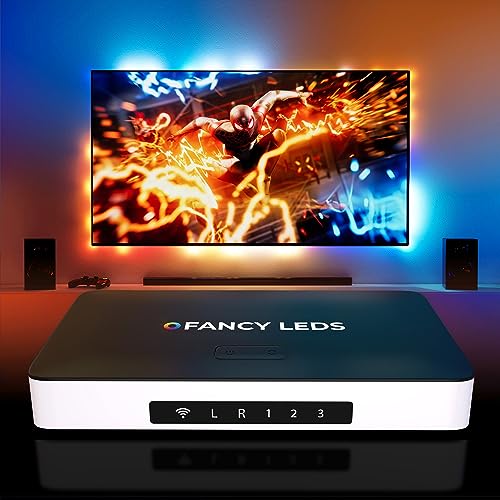Welcome to the step-by-step guide on how to calculate the power requirements for a setup with fancy LEDs! If you’re someone who loves experimenting with colorful lighting effects and wants to create a visually stunning setup, then this guide is for you.
Fancy LEDs have quickly become a popular choice for adding flair to various spaces, be it your home, office, or even events. However, when it comes to setting up these vibrant illumination systems, understanding their power requirements is crucial.
In this how-to guide, we’ll break down the process of calculating power requirements for your fancy LED setup. We’ll cover everything from determining the wattage of individual LEDs to considering the power supply capacity required.
By the end of this guide, you’ll have the knowledge and tools to ensure that your fancy LED setup not only shines brightly but also operates efficiently without any power-related hiccups. So, let’s dive in and make your LED dreams come true!
Top Picks for Illuminating Your Space
Gather the necessary information
When gathering the necessary information for your project, it’s crucial to determine the specifications of the fancy LEDs you are using. This involves finding out the voltage and current requirements, which you can typically find in the product manual or datasheet. Ensure you refer to these documents, as they provide detailed information that will help you properly integrate the LEDs into your project.
Calculate the power consumption per LED
To calculate the power consumption per LED, multiply the voltage and current requirements of each LED. For instance, if an LED needs 3 volts and 20 milliamps, you would calculate the power consumption as follows: 3 volts * 0.02 amps = 0.06 watts.
Determine the total number of LEDs
To count the total number of fancy LEDs in your setup that you need to power, start by visually examining your setup and identifying each individual LED. Next, take a notepad or open a spreadsheet and create a list to keep track of the LEDs. As you go through the setup, mark a tally or enter the quantity next to each LED on your list. Once you have accounted for all the LEDs, add up the total tally or sum the quantities entered in your list to determine the total number of LEDs.
Calculate the total power consumption
To calculate the total power consumption of your setup, multiply the power consumption per LED (as calculated in Step 2) by the total number of LEDs (determined in Step 3). This will give you the overall power consumption for your LED setup. Remember to ensure you have the power consumption values and LED count accurate before performing the calculation.
Consider efficiency and safety factors
When considering efficiency and safety factors, it is important to take into account any potential energy losses or safety concerns that may arise. To ensure a reliable power supply, I recommend adding a certain percentage (e.g., 10-20%) to the total power consumption. By doing so, you can account for any unexpected power demands and guarantee sufficient power for your system.
Determine the power supply voltage
To determine the power supply voltage for your fancy LEDs, start by checking the voltage available from your power source. This can usually be found on the label of the power supply. Make sure that the voltage matches or exceeds the voltage requirements of your LEDs. If the voltage is too low, your LEDs may not function properly, and if it is too high, it could damage them. So, it’s important to ensure that the power supply voltage is compatible with your fancy LEDs to ensure optimal performance.
Calculate the power supply current
To calculate the power supply current needed for your setup, you can follow these steps:
- Determine the total power consumption of your setup by adding up the power requirements of all the components. For example, if you have a monitor that consumes 50W, a computer that consumes 200W, and a printer that consumes 30W, the total power consumption would be 280W.
- Identify the voltage of your power supply. This information can usually be found on the power supply itself or in the product documentation. For instance, let’s say your power supply has a voltage of 120V.
- Divide the total power consumption (step 1) by the power supply voltage (step 2) to calculate the power supply current. In the example above, the calculation would be as follows:Power Supply Current = Total Power Consumption / Power Supply Voltage = 280W / 120V = 2.33A
- So, in this example, you would need a power supply with a current rating of at least 2.33A to meet the power requirements of your setup.
Remember to double-check the compatibility of the calculated power supply current with the specifications of your power supply to ensure that it can support your setup’s needs.
Select an appropriate power supply
To choose an appropriate power supply, make sure its voltage is equal to or greater than the power supply voltage mentioned in Step 6. Additionally, ensure that the power supply’s current rating is equal to or greater than the power supply current mentioned in Step 7. This will ensure the power supply can provide enough energy to meet the demands of the device while preventing any potential damage or malfunction.
Verify and test the setup
To verify and test the setup of your fancy LED system, start by double-checking all calculations and connections. Ensure that all the LED strips are properly connected to the power source and to each other by checking the wiring and securing any loose connections. Once everything is in place, it’s time to perform a test. Simply power on the system and observe if all the LED lights are functioning as intended. If any issues arise, troubleshoot the specific problem area, be it a loose wire or incorrect wiring, to achieve the proper functioning of your LED setup.
Wrapping Up: Power Calculations Made Easy!
In conclusion, calculating the power requirements for a setup with fancy LEDs is crucial for ensuring optimal performance and avoiding any potential issues. Throughout this guide, we have discussed the key factors to consider, such as the wattage of each LED, the total number of LEDs, and the efficiency of the power supply. By accurately calculating the power requirements, you can select the right power supply and prevent any potential overload or underpowering situations. Remember, it is always better to be proactive and make informed decisions to create a safe and reliable setup for your fancy LEDs. So, take your time, do the calculations, and enjoy the dazzling brilliance of your LED display!
Efficient LED Power Calculation
Getting Started with Fancy LEDs
- Understand the basics: Before using Fancy LEDs, it’s important to have a basic understanding of how they work. Read up on their different components, such as the LED chip, the driver, and the heat sink. This will help you in understanding their capabilities and limitations
- Choose the right power source: Fancy LEDs typically require a specific voltage and current to operate correctly. Make sure you select a proper power source that matches the LED’s requirements. You can usually find this information in the LED datasheet or product documentation
- Connect the LEDs correctly: Each Fancy LED will have different pinouts, so it’s crucial to connect them properly to avoid damaging them. Read the datasheet or consult the product manual to determine the correct pin configuration and make sure to connect them accordingly
- Experiment with different lighting effects: Fancy LEDs offer a variety of lighting effects, such as fading, pulsing, or changing colors. To explore these effects, use a microcontroller or an LED controller that supports dimming and color-changing functions. Experiment with different settings to achieve the desired lighting effect
- Pay attention to heat dissipation: Fancy LEDs can generate heat, especially when running at higher power levels for extended periods. Make sure they are properly cooled to ensure longevity and prevent overheating. Consider using thermal paste, heat sinks, or fans to dissipate the heat effectively
- Remember, always refer to the manufacturer’s guidelines and safety instructions when working with Fancy LEDs to ensure a smooth and successful experience. Happy experimenting!
Fancy LEDs: Frequently Asked Questions
What are the different color options available for fancy LEDs?
There are several color options available for fancy LEDs. Common colors include red, green, blue, yellow, and amber. Additionally, there are RGB LEDs that can produce a wide range of colors by combining red, green, and blue light. Some fancy LEDs even offer color-changing capabilities, allowing you to switch between different colors or create dynamic lighting effects. It’s worth noting that the specific color options may vary depending on the manufacturer and product.
How do I install fancy LED lights? Is it a DIY project or should I hire a professional?
Installing fancy LED lights can be a great way to enhance the ambiance of your space. As for whether it’s a DIY project or one that requires a professional, it ultimately depends on your level of comfort and expertise with electrical work.
If you have experience with electrical installations and feel confident in your abilities, it is possible to tackle this project yourself. However, it’s important to prioritize your safety. Make sure to turn off the power before working with any electrical wiring and follow the manufacturer’s instructions carefully.
On the other hand, if you feel unsure or lack the necessary knowledge and skills, it may be best to hire a professional electrician. They have the expertise to handle the installation properly and can ensure that all electrical connections are made safely. This will give you peace of mind and minimize any potential risks associated with electrical work.
Regardless of whether you choose to DIY or hire a professional, it’s always a good idea to do some research beforehand. Familiarize yourself with the specific requirements of the LED lights you plan to install and gather any necessary tools or equipment. Additionally, consider consulting with a professional even if you decide to do it yourself, as they can provide guidance and ensure you’re taking the right steps.
Remember, the key is to prioritize safety and ensure that the installation is done correctly. Happy lighting!










